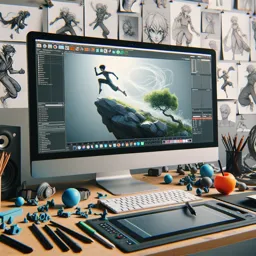Understanding the Power of Lighting in 3D Animation
Lighting in 3D animation is much more than simply illuminating a scene. It plays a vital role in storytelling, mood creation, and directing the viewer’s attention. Mastering creative lighting techniques can elevate your animations, adding depth, realism, and emotional impact to your work.
Types of Lighting Setups
Several foundational lighting setups are commonly used in 3D animation, each with its distinct characteristics:
- Three-Point Lighting: The classic setup includes a key light, fill light, and back light. It offers balanced lighting and is ideal for highlighting characters.
- Ambient Lighting: Simulates soft, surrounding light, reducing harsh shadows and creating a more relaxed or natural mood.
- Dramatic Lighting: Relies on strong contrast, bold shadows, and unconventional angles to enhance tension, suspense, or highlight narrative moments.
Color and Temperature in Lighting
Color temperature defines the warmth or coolness of a light source. Warmer tones (yellows and oranges) can evoke comfort, intimacy, or nostalgia, while cooler tones (blues and grays) are often used to communicate tension, melancholy, or isolation.
Colored lights can also be a powerful storytelling device, especially in stylized or fantasy animations, helping to reinforce emotions and themes within the scene.
Lighting for Realism
For photorealistic results, it’s crucial to simulate how light behaves in the real world. Techniques such as global illumination and physically-based rendering (PBR) accurately mimic light interactions, including reflections, refractions, and subsurface scattering.
Proper use of shadows, highlights, and ambient occlusion—which adds shading in crevices and corners—gives your 3D scenes a sense of depth and realism.
Storytelling Through Lighting
Lighting is also a narrative device. Strategic placement and intensity of lights can express time of day, weather, mood, or character psychology. For instance:
- A spotlight can isolate a character, suggesting vulnerability.
- Warm, diffuse lighting can communicate safety or nostalgia.
- Harsh backlighting can hint at mystery or danger.
Tips for Effective Lighting in 3D Animation
- Use real-world references as guides when setting up lights.
- Try different lighting setups and color combinations to find what best fits your scene.
- Break traditional rules for creative effect—bold lighting choices can define a unique visual style.
- View your scene from multiple camera angles to maintain lighting consistency.
Conclusion
Lighting is one of the most expressive tools in 3D animation. By thoughtfully applying creative lighting techniques, you can enhance mood, depth, and storytelling impact, making your animations more visually compelling and emotionally resonant.

















